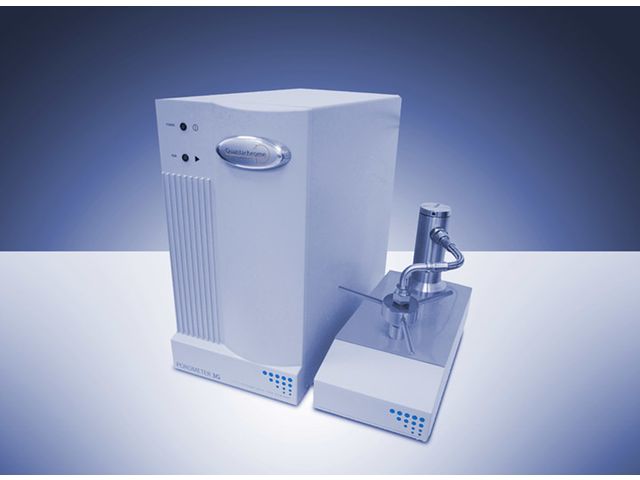 Flow porometric analysis is an essential tool for studying porous materials. It involves measuring the flow of a gas through a porous sample to determine its properties, such as pore size distribution and permeability. One specific method within this analysis is capillary flow porometery, which is particularly effective for assessing the smallest pores in materials. This technique plays a crucial role in various industries and scientific research, helping to improve material performance and design. In this article, we’ll dive into its primary applications and how they impact different fields.
Flow porometric analysis is an essential tool for studying porous materials. It involves measuring the flow of a gas through a porous sample to determine its properties, such as pore size distribution and permeability. One specific method within this analysis is capillary flow porometery, which is particularly effective for assessing the smallest pores in materials. This technique plays a crucial role in various industries and scientific research, helping to improve material performance and design. In this article, we’ll dive into its primary applications and how they impact different fields.
Understanding Flow Porometric Analysis
Before exploring the applications, let’s first define what flow porometry is. The technique involves measuring the flow rate of a gas, such as air, through a porous material. By analyzing how gas flows through the material, we can determine the size and distribution of pores, as well as the material’s overall permeability. This data is vital for assessing how a material behaves in different environments, from industrial use to scientific experiments.
Applications in Industrial Filtration
One of the main applications of flow porometric analysis is in industrial filtration. In industries such as oil and gas, pharmaceuticals, and water treatment, filters play a significant role in maintaining safety and efficiency. By understanding the pore structure of filtration materials, engineers can design more effective filters. Flow porometric analysis helps optimize filtration processes by ensuring that the materials used are appropriately designed for specific filtration tasks, enhancing performance and longevity.
Impact on Environmental Studies
Flow porometric analysis is also crucial in environmental science, particularly when studying soil and groundwater. It helps scientists understand the permeability of soils and rocks, which is vital for evaluating water flow and contamination risks. For example, when assessing the risk of pollution from industrial waste, flow porometry can identify how quickly contaminants might spread through the soil. This information is crucial for designing remediation strategies and ensuring that environmental regulations are met.
Enhancing Battery Technology
In the field of energy storage, particularly batteries, flow porometry is used to improve the performance of materials like electrodes and separators. The pore structure of these materials affects the efficiency and capacity of batteries. By using flow porometric analysis, researchers can examine how ions move through the materials and identify ways to enhance their conductivity and overall performance. This leads to the development of batteries that charge faster, last longer, and are more efficient.
Optimizing Construction Materials
Another area where flow porometry is widely used is in construction materials. Concrete and other building materials have a complex internal structure of pores that affect their strength and durability. By conducting flow porometric analysis on these materials, manufacturers can better understand how water and other substances flow through the materials. This insight allows them to optimize their production processes and develop stronger, more durable construction materials that withstand harsh environmental conditions.
Medical and Pharmaceutical Applications
In the medical and pharmaceutical fields, flow porometry plays a crucial role in developing materials like drug delivery systems and wound dressings. By examining the pore structure of these materials, scientists can ensure that they function as intended. For example, in drug delivery, it’s important that the pores are of the right size to allow controlled release of medication. Flow porometric analysis provides valuable data to fine-tune these materials and improve patient outcomes.
Applications in Carbon Capture and Storage (CCS)
Carbon capture and storage (CCS) technologies aim to reduce the amount of CO2 released into the atmosphere by capturing it from industrial sources and storing it underground. Flow porometric analysis helps scientists assess the permeability and porosity of rocks and materials used for CO2 storage. By understanding the flow of gases through these materials, researchers can identify the most suitable sites for CO2 storage, ensuring that the gas remains trapped and does not leak into the atmosphere.
Improving Food Packaging
Flow porometric analysis is also used in the food industry, especially in the design of food packaging materials. Packaging plays an essential role in preserving the freshness and quality of food. By analyzing the pores in packaging materials like films and containers, manufacturers can improve their ability to control the transfer of gases, moisture, and light. This is vital for maintaining the shelf life and safety of food products, especially those that are sensitive to environmental changes.
Geological and Oil Exploration
In geological and oil exploration, flow porometric analysis is used to study the porosity and permeability of rock formations. This information is critical for assessing the potential for oil or gas reservoirs. By analyzing the pore structure of rocks, geologists can determine the best locations to drill and predict how easily oil or gas can flow through the rock. This application is particularly important for optimizing extraction processes and reducing costs in the energy sector.
Final Thoughts
In conclusion, flow porometric analysis is a versatile and essential technique with applications across multiple industries. From improving filtration materials to enhancing energy storage systems, this analysis provides valuable insights into the behavior of porous materials. As industries continue to innovate and demand more efficient materials, the importance of flow porometry will only grow, helping to design better products and solutions for various fields.
 The Random Collective Where Curiosity Meets Creativity
The Random Collective Where Curiosity Meets Creativity
